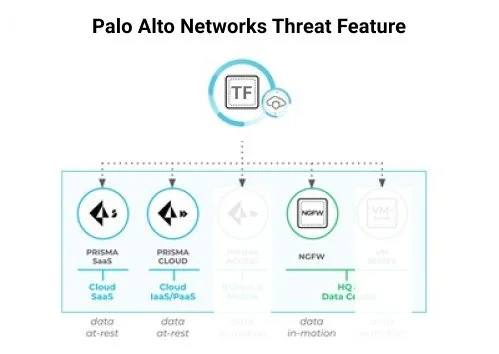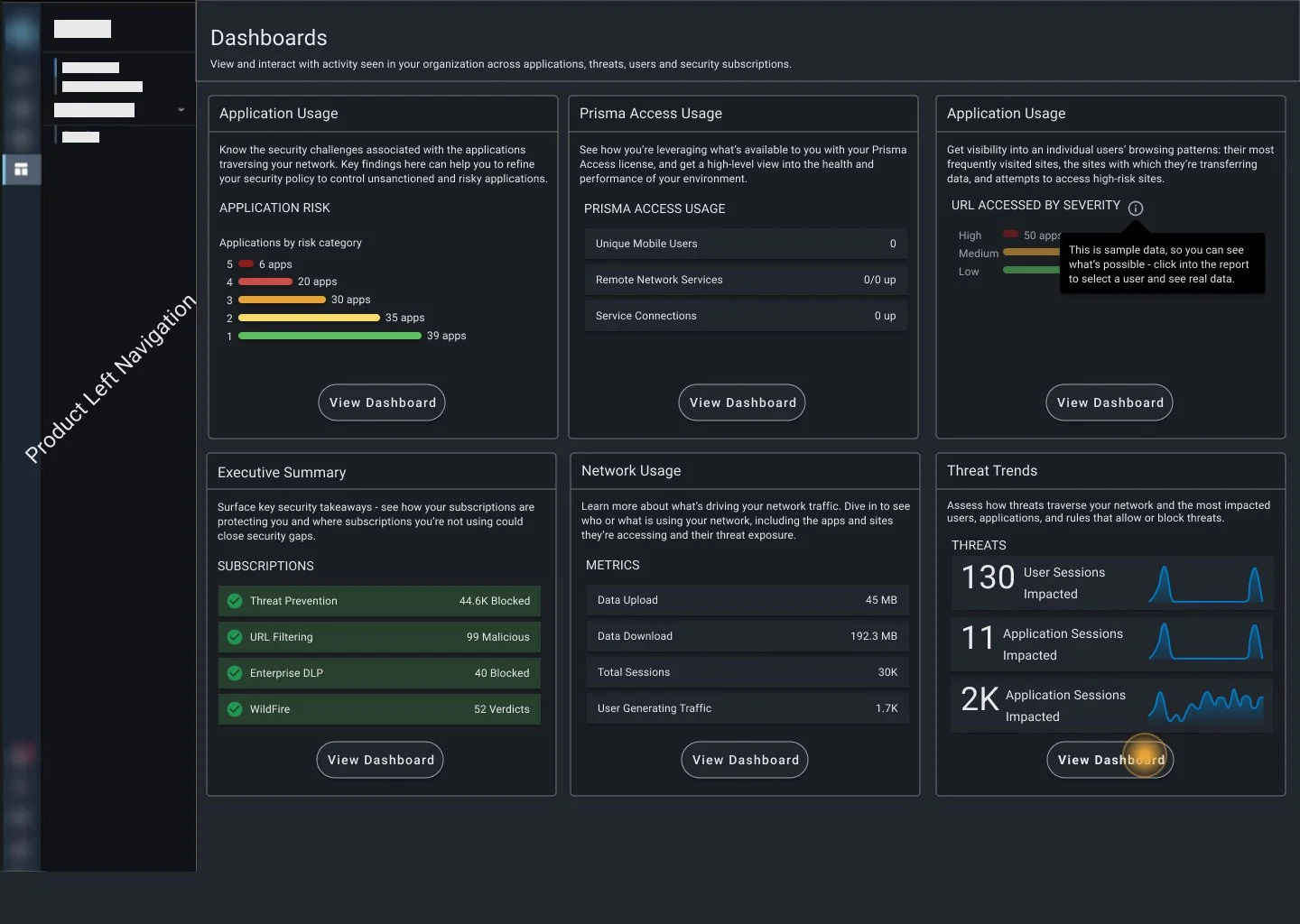Visualizing The Threat Landscape
Design Strategy, Multiple Team Collaboration
Client: Palo Alto Networks, Visualization Design Team
Role: UX Designer, Design Strategy
Users: SOC Analyst, SC Admin, Executives
Project Overview
At Palo Alto Networks, I was part of a significant project where we designed a strategy based on a feature that will be the core of all PAN SaaS products. Palo Alto Networks executives tasked our team with carrying out their vision. We worked closely with other teams to determine the most scalable way of adding a Threat Feature to multiple products, based on the user workflows. This was a challenging project due to the diversity of users across different companies, such as Google, Amazon, Softbank, General Motors, US Department of Education, Wells Fargo, and 7-eleven.
The Challenge
A company’s network security relies on the expertise of the user’s knowledge of Palo Alto Network products. PAN’s security products aim to incorporate recommendations to improve workflow efficiency and aid all types of users in understanding the network security landscape.
PAN’s developing a threat feature to incorporate into their three main SaaS products; Prisma SASE, Prisma Cloud, and AIops for NGFW. The design concepts need buy-in from all three product teams as well as executive buy-in to move forward. Additionally, we aim to test iterations with proxy users to ensure the features serve their tasks.
So far…. the discussions with Engineering and Product Managers revealed that a single threat feature concept cannot be applied across all three products, and the design had to shift towards displaying only information the users have paid for. Insights from testing have shown the initial approach of upselling premium features was not well received, with users preferring an empty screen instead of greyed-out features. They also expressed dissatisfaction with small icons and inadequate pop-up explanations, preferring separate training and onboarding materials.
How might we find specific user pain points across products?
How might we deeply understand the user’s discomfort with upselling?
How might we design an onboarding to empower feature adoption?
What metrics would be most important to present in product team meetings?
Reframed Goal
“Create a scalable design system for the Threat Feature of PAN’s SaaS products, including MVPs for all three products. Conduct testing to evaluate the design and develop a strategy for upselling premium features. Collaborate with Product Team’s to distinguish base product features from premium features”
Solution: MVP for Prisma Access
Concepts
In Prisma Access the current homepage is on the left screen, it displays dashboards based on users’ subscriptions. We based the filtering interaction for the Threat Feature dashboard based on Prisma Access and other PAN products filter. The right screen highlights the global filter. Depending on the instance, not all filters in dropdowns will be available, they are dependent on subscription.
We developed different visuals within the dashboard to show data grouped differently. Hover states, KPI’s, trend lines, and tabled categories are examples shown in the video. We wanted to test to see if given different ways of interpreting similar data would engage a wider range of users.
Designing
Our team collaborated with Engineers to develop a prototype of the layout for Threat Feature pages. The prototype showcases filtered views of Malware threats, and other tabled information about Malware, displays the applications with the highest number of threats, and enables users to examine the threat(s) linked to a particular user
Implementation
The first built iteration using real data surfaced visual problems for the Malware category. Its values are significantly higher, by a factor of 10 in some instances compared to the other categories. Our fix was to work with the Engineers to do each pie sliver as its own percentage to make the scale look better, but by this point, we felt we were putting lipstick on a pig.
Impact
If able to implement similar feature capabilities throughout all products, it could result in creating one of the most user-friendly security products in the market. Additionally, it may bring cost savings in areas such as onboarding, customer support, and specialized staff.
Reflection
Throughout my time at Palo Alto Networks, I realized that the success of the designs relies on many factors. In the design iterations above after adding real data and testing it was apparent that our concept did not align with our revised objectives. At this point, it is necessary to reconsider our concepts rather than blindly push forward on attractive UI merit alone.




